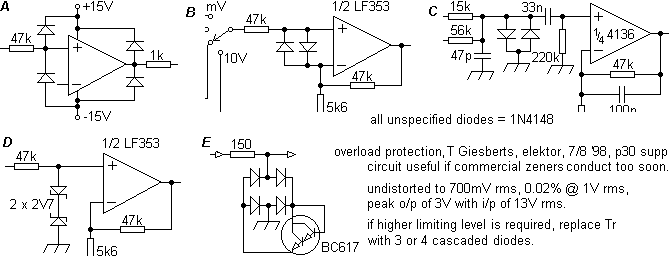Hello,
I have a repair job I'm doing on a Trace Elliot Brat combo amp at the moment. First the problem is that the signal is being lost. The gain has to be turned up really high to hear it at all and then the noise floor is very high. If the gain is turned up even higher a constant farting noise also appears.
I traced the problem all the way back to the first amplification stage in the pre-amp with my oscilloscope. I've attached the schematic for reference. There is no signal output from IC2-A that will trigger the scope. With the scope probe on the + input (leg 3 of the IC) I see the input signal from the signal generator clearly while the amp is powered OFF. When I turn the amp ON the signal disappears from the screen completely. When I turn the amp OFF again the signal re-appears floating back down from the top of the screen to where it originally was.
With my multimeter I see DC voltage of about -10V on both inputs. From researching OP amps I understand they amplify the difference between the inputs so having a significant DC voltage isn't a problem if it's roughly the same on both inputs? There is no significant DC voltage on either of the inputs of the next stage IC2-B. I'm also not sure why the input signal disappears from my scope when the amp is turned on and the DC voltage appears because the scope is on AC setting so it should be blocking the DC component anyway?
Logically it seems obvious to me that the IC is bad and needs to be replaced as I cannot see what else it could possibly be. However, in case there's something I'm missing or not understanding here some input would be much appreciated as I don't want to go to trouble of replacing that part if it turns out not to be the problem.
Thanks,
Greg
I have a repair job I'm doing on a Trace Elliot Brat combo amp at the moment. First the problem is that the signal is being lost. The gain has to be turned up really high to hear it at all and then the noise floor is very high. If the gain is turned up even higher a constant farting noise also appears.
I traced the problem all the way back to the first amplification stage in the pre-amp with my oscilloscope. I've attached the schematic for reference. There is no signal output from IC2-A that will trigger the scope. With the scope probe on the + input (leg 3 of the IC) I see the input signal from the signal generator clearly while the amp is powered OFF. When I turn the amp ON the signal disappears from the screen completely. When I turn the amp OFF again the signal re-appears floating back down from the top of the screen to where it originally was.
With my multimeter I see DC voltage of about -10V on both inputs. From researching OP amps I understand they amplify the difference between the inputs so having a significant DC voltage isn't a problem if it's roughly the same on both inputs? There is no significant DC voltage on either of the inputs of the next stage IC2-B. I'm also not sure why the input signal disappears from my scope when the amp is turned on and the DC voltage appears because the scope is on AC setting so it should be blocking the DC component anyway?
Logically it seems obvious to me that the IC is bad and needs to be replaced as I cannot see what else it could possibly be. However, in case there's something I'm missing or not understanding here some input would be much appreciated as I don't want to go to trouble of replacing that part if it turns out not to be the problem.
Thanks,
Greg



Comment